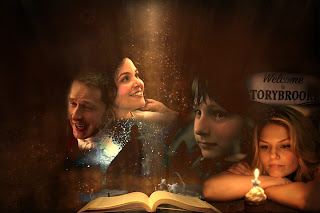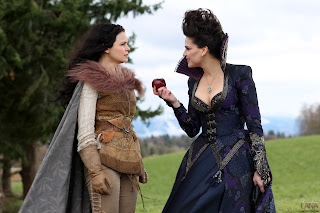
"NORTH BY NORTHWEST" (1959) Review
When producers Albert "Cubby" Broccoli and Harry Saltzman first set about creating the James Bond movie franchise, author Ian Fleming - who had written the novels - suggested they hire Hollywood legend, Cary Grant, for the role of the famed British agent. I do not know whether Broccoli and Saltzman seriously considered Fleming's suggestion, but I cannot help but wonder if had seen the actor in Alfred Hitchcock's 1959 thriller, "NORTH BY NORTHWEST".
"NORTH BY NORTHWEST" originated with a deal Hitchcock had with MGM Studios to do a film version of Hammond Innes' novel, "The Wreck of the Mary Deare". Hitchcock recruited a friend of his, screenwriter Ernest Lehman, to write the script. But after several weeks, Lehman found himself unable to write an adaptation. Longing to work with Lehman, Hitchcock suggested that he write something else - namely the ultimate "Hitchcock film". The results turned out to be a chase film featuring an innocent man accused of a crime he did not commit.
The movie's story begins with advertising executive Roger O. Thornhill being mistaken for a U.S. government agent named George Kaplan, when he summons a hotel bellhop, who is paging Kaplan at the same time. Two enemy agents named Valerian and Licht kidnap Thornhill and take him to their superior, a major foreign spy named Phillip Vandamm, who is using the Long Island home of a man named Lester Townsend for this meeting. When Thornhill continues to insist that he is not George Kaplan, Vandamm orders his right-hand man Leonard, along with Valerian and Licht to stage a drunk driving death for ad executive. The attempt fails and Thornhill escapes. And when Thornhill fails to convince the law that he had been kidnapped, he sets out to clear his name. He tracks the real Lester Townsend to the United Nations, but the latter is killed by one of Vandamm's henchman. Thornhill is accused of the crime and he flees. When he learns that Kaplan had checked into a hotel in Chicago, he boards the 20th Century Limited, where he meets an attractive woman named Eve Kendall. She helps him evade the police upon their arrival in Chicago. But unbeknownst to Thornhill, Eve is working with Vandamm and Leonard.
Author and journalist Nick Clooney once described "NORTH BY NORTHWEST" as Alfred Hitchcock's "most stylish thriller, if not his best". And I have to agree. "NORTH BY NORTHWEST" proved to be an exciting chase film and travelogue that started in Manhattan and Long Island, and ended up on the side of Mount Rushmore in South Dakota. Thanks to Lehman's screenplay,"NORTH BY NORTHWEST" brimmed with sharp dialogue and even sharper characterization. The movie's opening, which featured Cary Grant's Thornhill and his secretary engaged in a last minute meeting over his schedule on the streets of Manhattan, gave audience a pretty clear idea of the ad executive's personality - charming, intelligent, arrogant and impatient. Thornhill is a character that cries for emotional development.
If I must be honest, the characters proved to be the movie's biggest assets. As much as I like Lehman's chase story of an innocent man trying to clear his name of murder, I feel that it has some questionable writing. In fact, some of its inconsistencies reminded me of such one would find in a James Bond movie. If Vandamm wanted Thornhill dead that badly, why arrange for the latter's death at an isolated bus stop in the middle of the Indiana countryside . . . in broad daylight, using a crop duster? Why not have one of his minions quietly put a knife between his ribs on the streets of Chicago? Even arranging Thornhill's death as a drunk driving incident seemed a bit over-the-top to me. Why not kill Thornhill first, pour alcohol on his body, set the car on fire before sending it over a ledge? I am not claiming to know how Lehman and Hitchcock should have handled these scenarios. But the methods they used for Vandamm's attempts on Thornhill's life struck me as similiar to the idiotic methods that many Bond villains used to kill the British agent.
I have to admit that Vandamm's attempts on Thornhill's life provided some of the movie's more memorable moments. The attempt to pass off Thornhill's death as a drunk driving incident had me on the edge of my seat and at the same, laughing rather hard. A "drunken" Cary Grant really did have me in stitches. I could also say the same about the sequence at the Chicago auction, following the dust cropper incident, in which Thornhill confronted Vandamm and Eve before being hauled away by cops for his hilarious disruption of the auction. The finale sequence at Mount Rushmore brimmed with Hitchcock's usual style of suspense. But it was the crop duster sequence that truly impressed me. From a narrative point-of-view, the sequence seemed filled with questionable writing. But as a suspenseful and action sequence, I consider it a masterpiece. The most interesting aspect of the crop duster sequence seemed to be its beginning - that fascinating moment in which Thornhill stands at that isolated bus stop for several minutes, staring at another man who has appeared on the scene before the crop duster's attack. I noticed that director Terence Young did not hesitate to copy it for one action sequence in the 1963 movie,"FROM RUSSIA WITH LOVE".
The crop duster sequence and many other scenes benefited from Robert Burks' excellent photography. I was also impressed by George Tomasini's editing, which struck me as especially effective in the Long Island, crop duster and Mount Rushmore sequences. Composer Bernard Herrmann, who once made an interesting comment on Richard Rodney Bennett's score for"MURDER ON THE ORIENT EXPRESS", collaborated on many Hitchcock's films during a nine-year period between 1955 and 1964. One of those scores was the memorable one he wrote for "NORTH BY NORTHWEST". His score blended well with the opening titled sequence created by Saul Bass.
But as I had stated earlier, the movie's biggest strength turned out to be the cast. Both Adam Williams and Robert Ellenstein made quite a sinister pair as Vadamm's two henchmen, Valerian and Licht. Jessie Royce Landis, who was only seven years older than Cary Grant, gave quite a humorous and stylish performance as his witty mother, Mrs. Thornhill. Leo G. Carroll, who later became famous for the 1960s series "THE MAN FROM U.N.C.L.E.", was perfect as the intelligent and manipulative spymaster, "the Professor".
For me, there were four performances that stood out for me. Martin Landau gave his first stand-out performance as Vandamm's observant, yet malevolent henchman, Leonard. Unless my eyes were deceiving me, Landau seemed to have given Leonard a slight homosexual subtext that I found interesting. In many ways, James Mason's Vandamm seemed to be the perfect nemesis for Cary Grant's Thornhill . . . especially with his silky voice, suave manners and good looks. But Mason made sure that the menace was always there behind the debonair facade. I must admit that Eva Marie Saint would have never been my first choice as the movie's femme fatale, Eve Kendall. But I had forgotten that Saint was a first-rate actress and Oscar winner. I should not have been surprised by her ability to be chameleon and create a leading female character who seemed to be ahead of her time. However, the man of the hour proved to be Cary Grant. He has portrayed characters more complex than Roger Thornhill. But Lehman's script still managed to provide plenty of bite to a role that began as a child in a man's body and developed into a heroic and responsible man who managed to retain his wit. I think that Thornhill may prove to be one of my favorite Grant roles.
I do not feel that "NORTH BY NORTHWEST" was one of Alfred Hitchcock's best movies. But I cannot deny that I found it to be one of his most stylish and entertaining films. Not only did it feature memorable action sequences, humor and a superb cast led by Cary Grant; I feel that it could have easily served as a template for many James Bond movies throughout the years. I really look forward to watching the movie as many times possible in the future.






































.jpg)

























